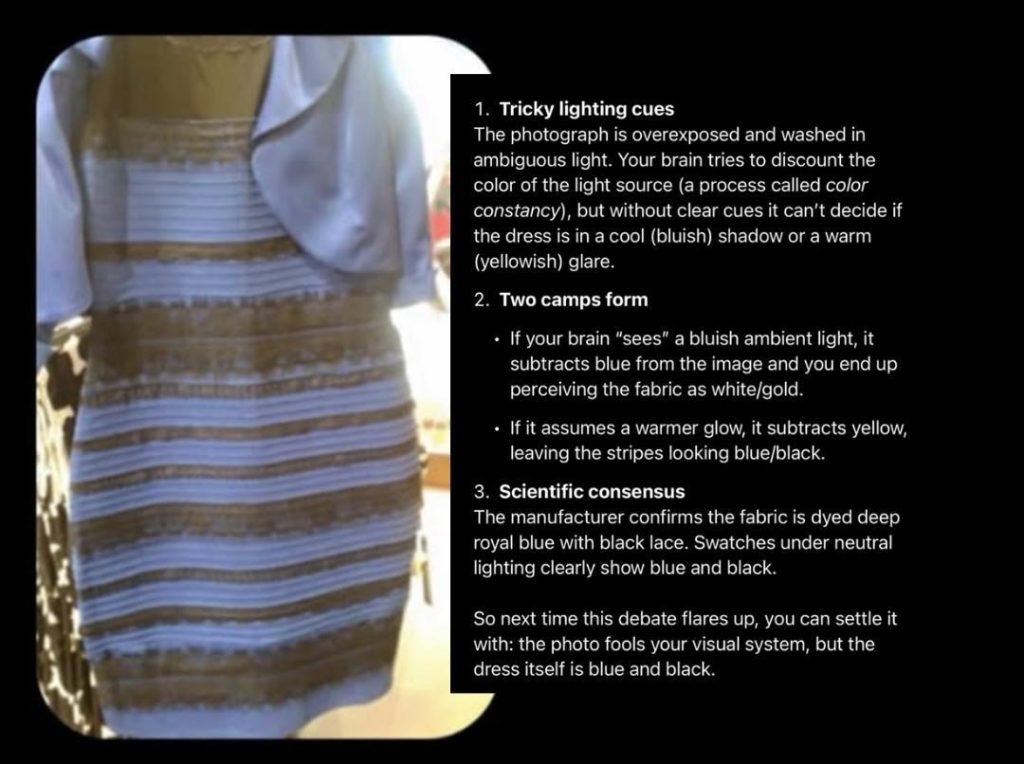
OpenAI’s New AI Models Solve Debate Over Color of Viral Dress
In the era of social media, a single image can spark a global debate, and that’s exactly what happened when a dress was posted on Instagram in 2015. The image showed a dress with a questionable color, leaving many people divided over its true hue. Some claimed it was blue and black, while others swore it was white and gold. The debate raged on, with no clear answer in sight. That was until OpenAI, a leading artificial intelligence research organization, stepped in with its latest AI models to settle the matter once and for all.
The Infamous Dress Debacle
The dress in question was posted on Instagram by Scottish model and photographer, Caitlin McNeill, and her friend, Roman Sidorenko. The image showed a dress that appeared to be either blue and black or white and gold, depending on how one looked at it. The debate sparked a massive online discussion, with many people weighing in on social media. The dress became a global phenomenon, with news outlets and celebrities chiming in on the topic.
The Limitations of Human Perception
So, why did the dress appear to be different colors to different people? The answer lies in the way our brains process visual information. Our brains are wired to recognize patterns and make assumptions based on context. In this case, the dress’s color was influenced by the surrounding environment, lighting, and individual biases. This is known as a “perceptual bias,” where our perception of reality is influenced by our personal experiences and experiences.
Enter OpenAI’s O3 and O4-Mini Reasoning Models
Fast-forward to 2023, when OpenAI unveiled its latest AI models, O3 and O4-Mini Reasoning Models. These models are capable of image analysis and are designed to understand and reason about visual data. In a groundbreaking experiment, OpenAI’s researchers used these models to analyze the infamous dress image and provide a definitive answer.
AI’s Analysis: Blue and Black
According to OpenAI’s O3 and O4-Mini Reasoning Models, the dress is indeed blue and black. The AI models analyzed the image and identified the dress’s color based on its physical properties, such as the fabric’s texture, pattern, and lighting conditions. The models also took into account the surrounding environment and the way the dress interacts with it.
How the Photo “Fools” Our Visual System
So, why did the dress appear to be white and gold to some people? OpenAI’s models explained that the image “fools” our visual system by exploiting the way our brains process color information. The dress’s color is a result of a combination of factors, including the way the fabric reflects light, the surrounding environment, and individual biases. The AI models showed that the dress’s color is not a fixed property but rather a subjective interpretation based on our unique visual experiences.
Implications for AI Research and Human Perception
The success of OpenAI’s O3 and O4-Mini Reasoning Models in settling the dress debate has significant implications for AI research and human perception. It highlights the importance of incorporating human-centered design principles into AI development, ensuring that AI models better understand and interact with humans.
Furthermore, the experiment demonstrates the potential of AI in solving complex visual perception problems. By analyzing and understanding visual data, AI models can provide insights into the subjective nature of human perception, challenging our assumptions and biases.
Conclusion
The debate over the dress’s color may seem trivial, but it has far-reaching implications for our understanding of human perception and AI research. OpenAI’s O3 and O4-Mini Reasoning Models have shown that AI can provide a definitive answer to a seemingly subjective question, highlighting the potential of AI in solving complex visual perception problems.
As we continue to develop and improve AI models, it’s essential to consider the subjective nature of human perception and the limitations of our visual system. By working together, humans and AI can unlock new insights and understanding, challenging our assumptions and biases, and pushing the boundaries of what is possible.
Source:






